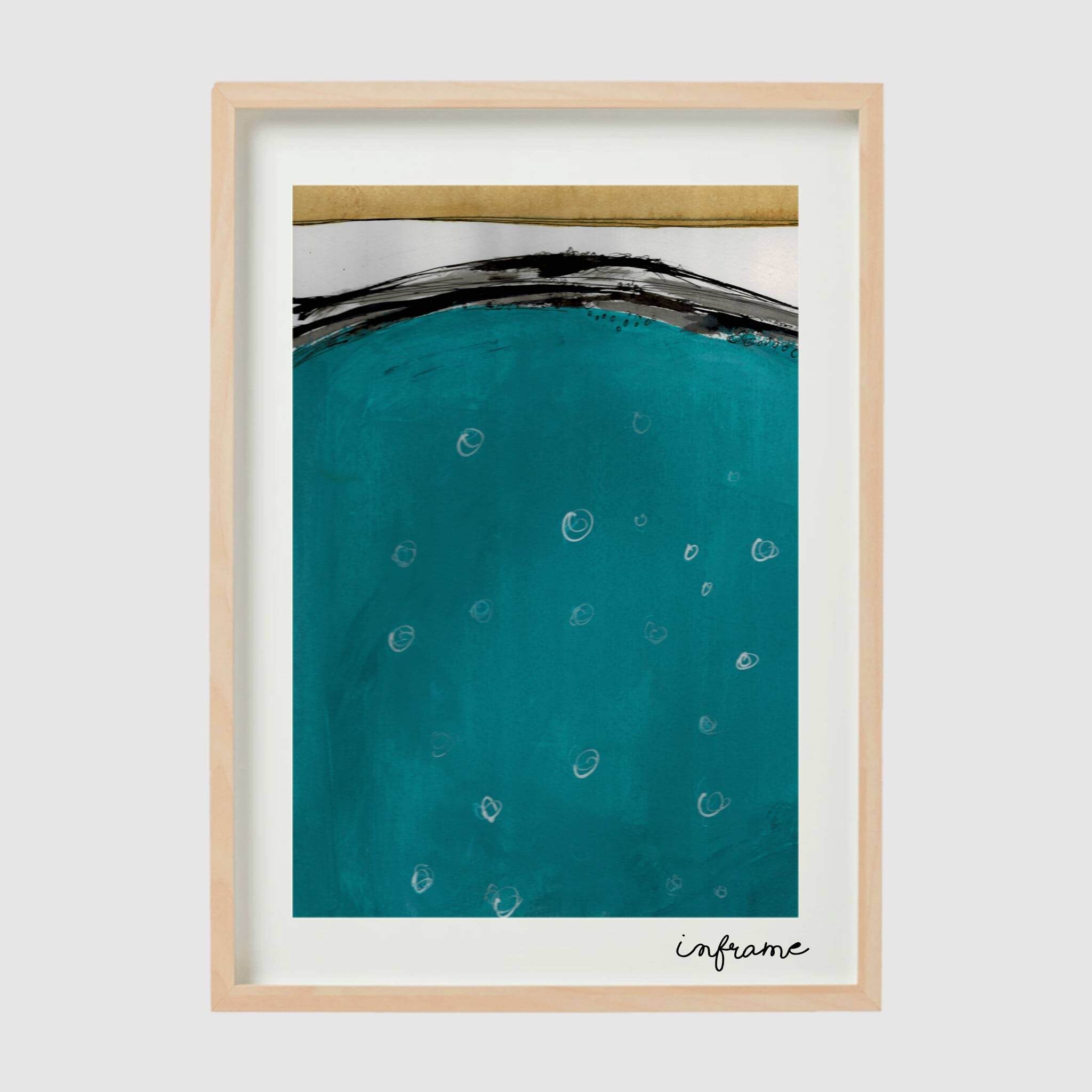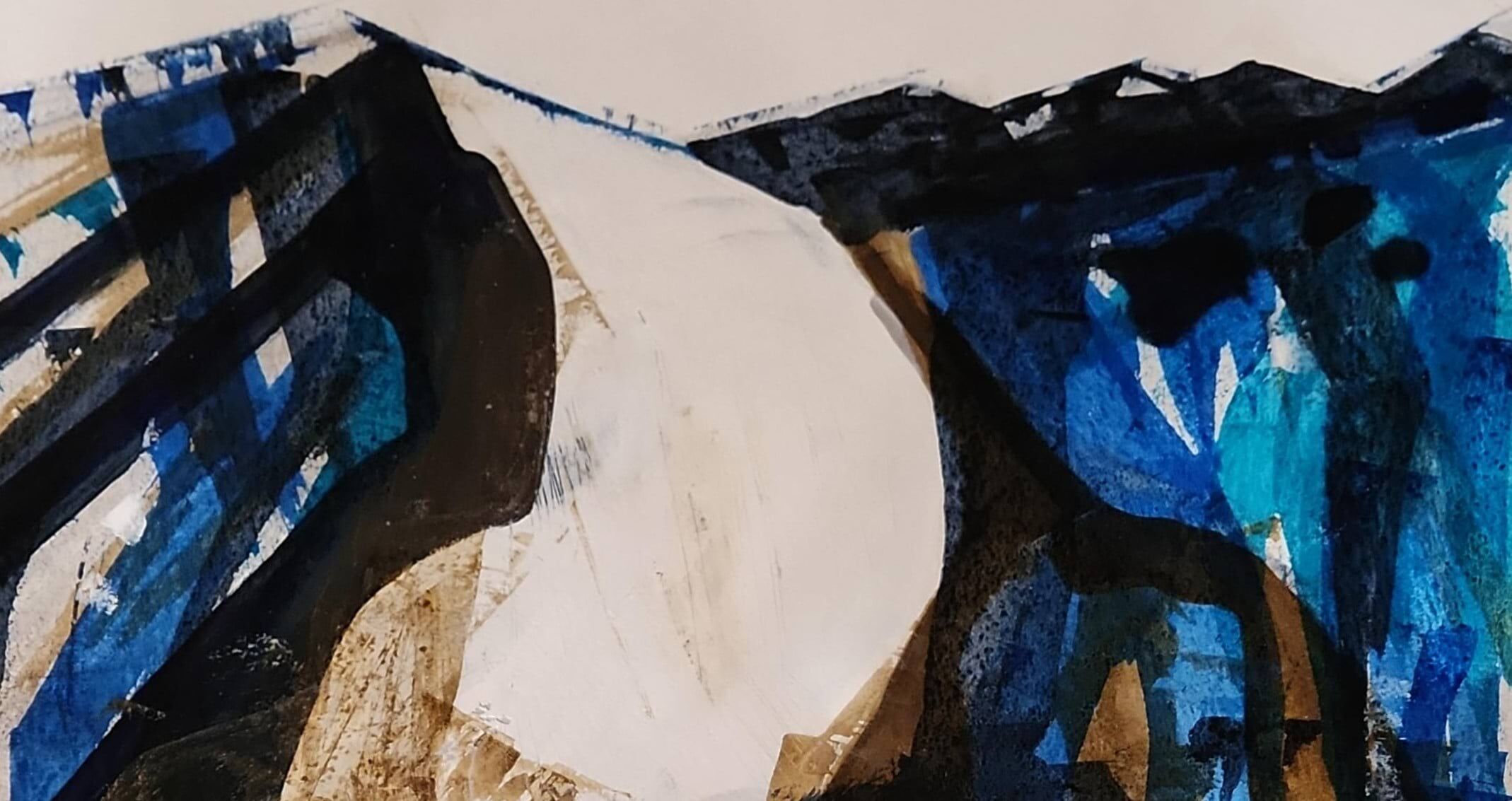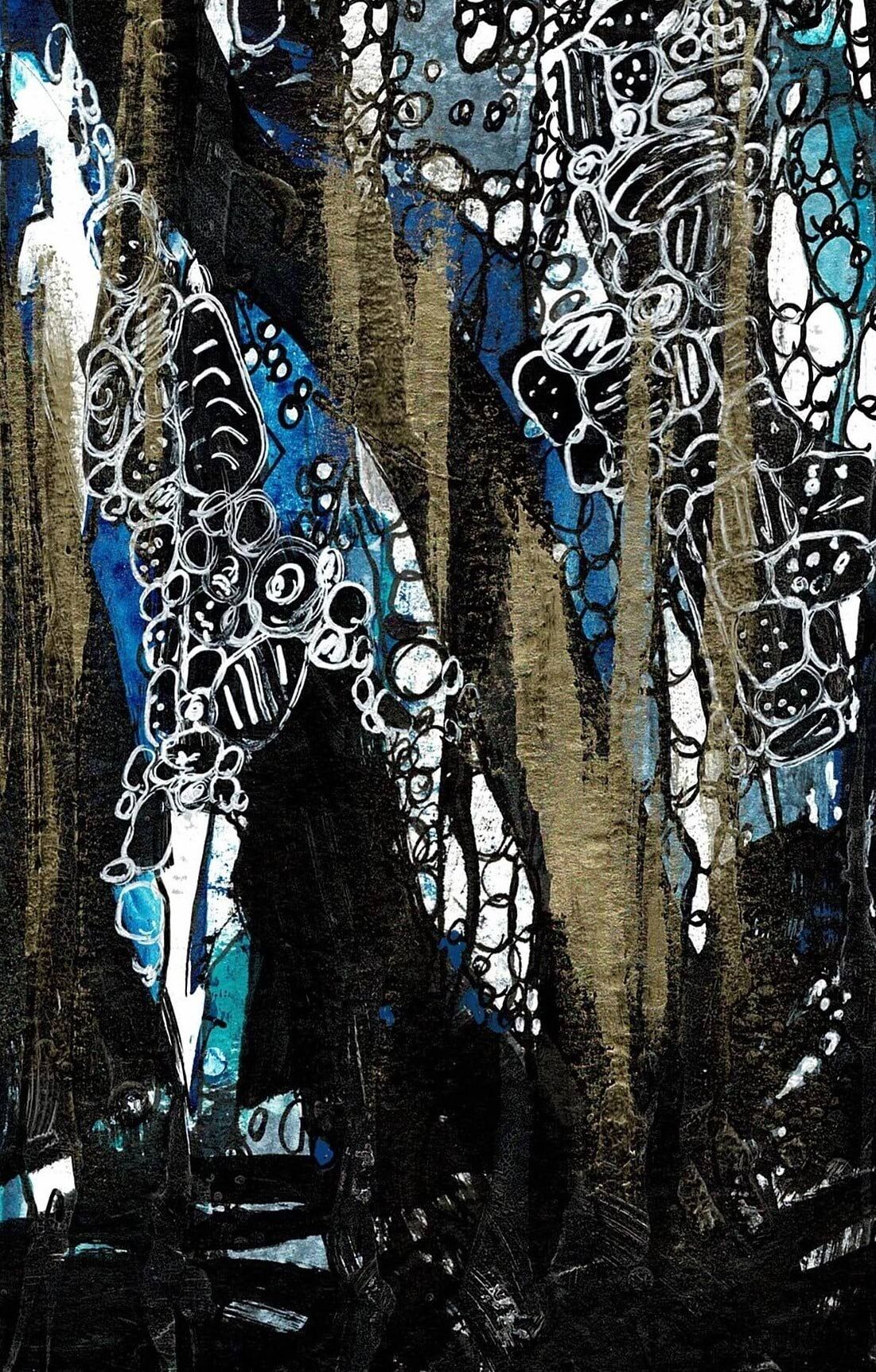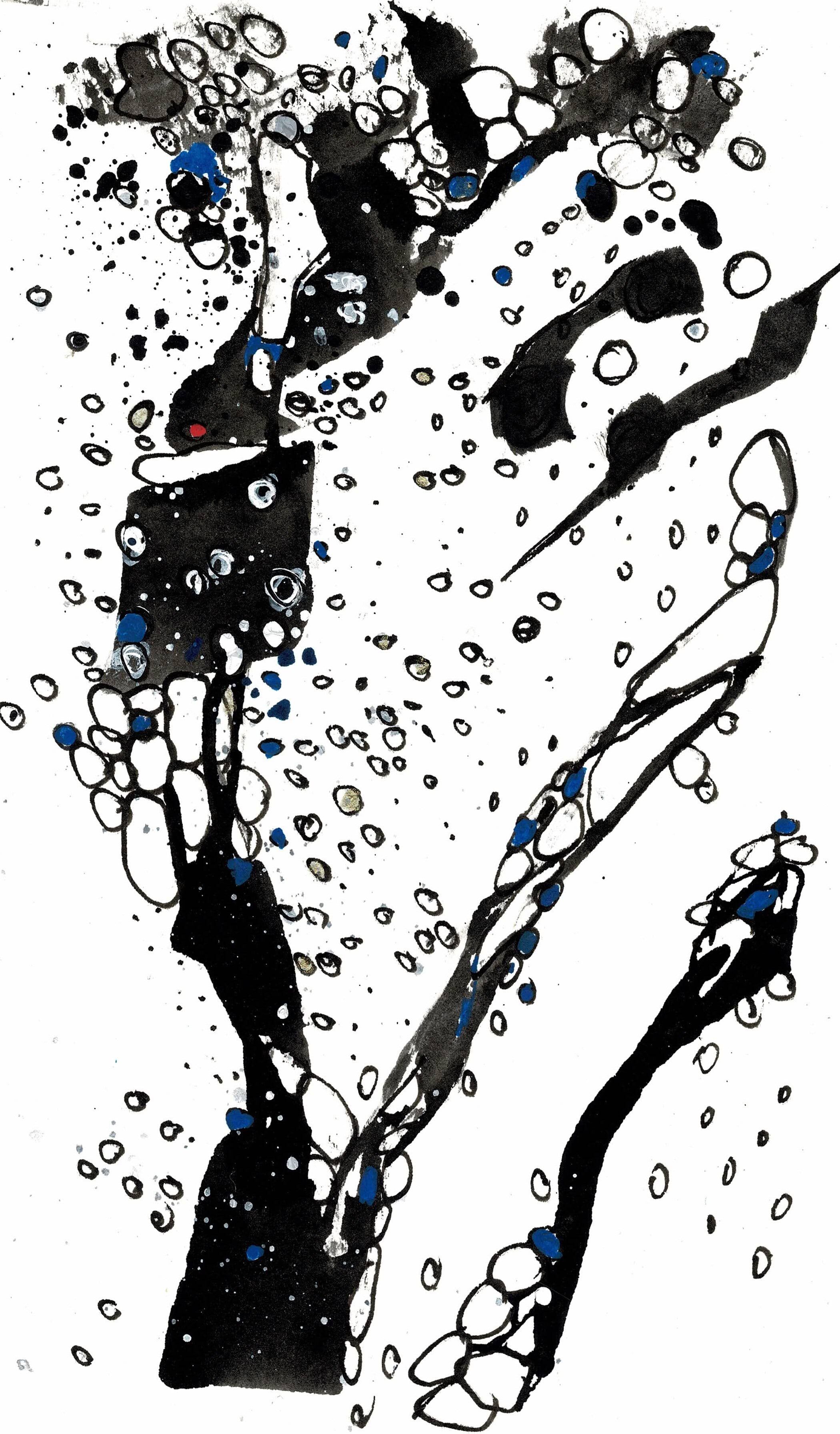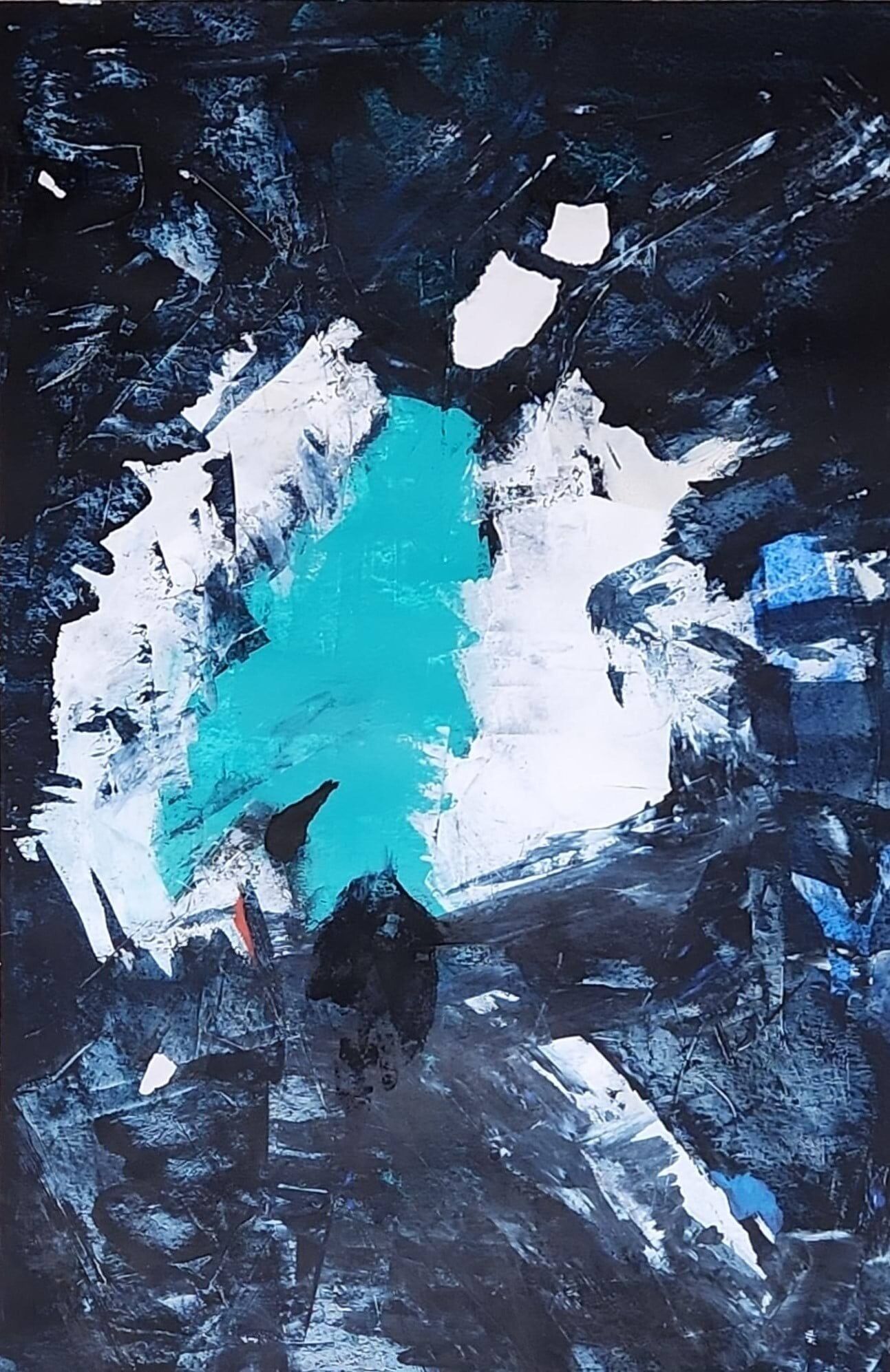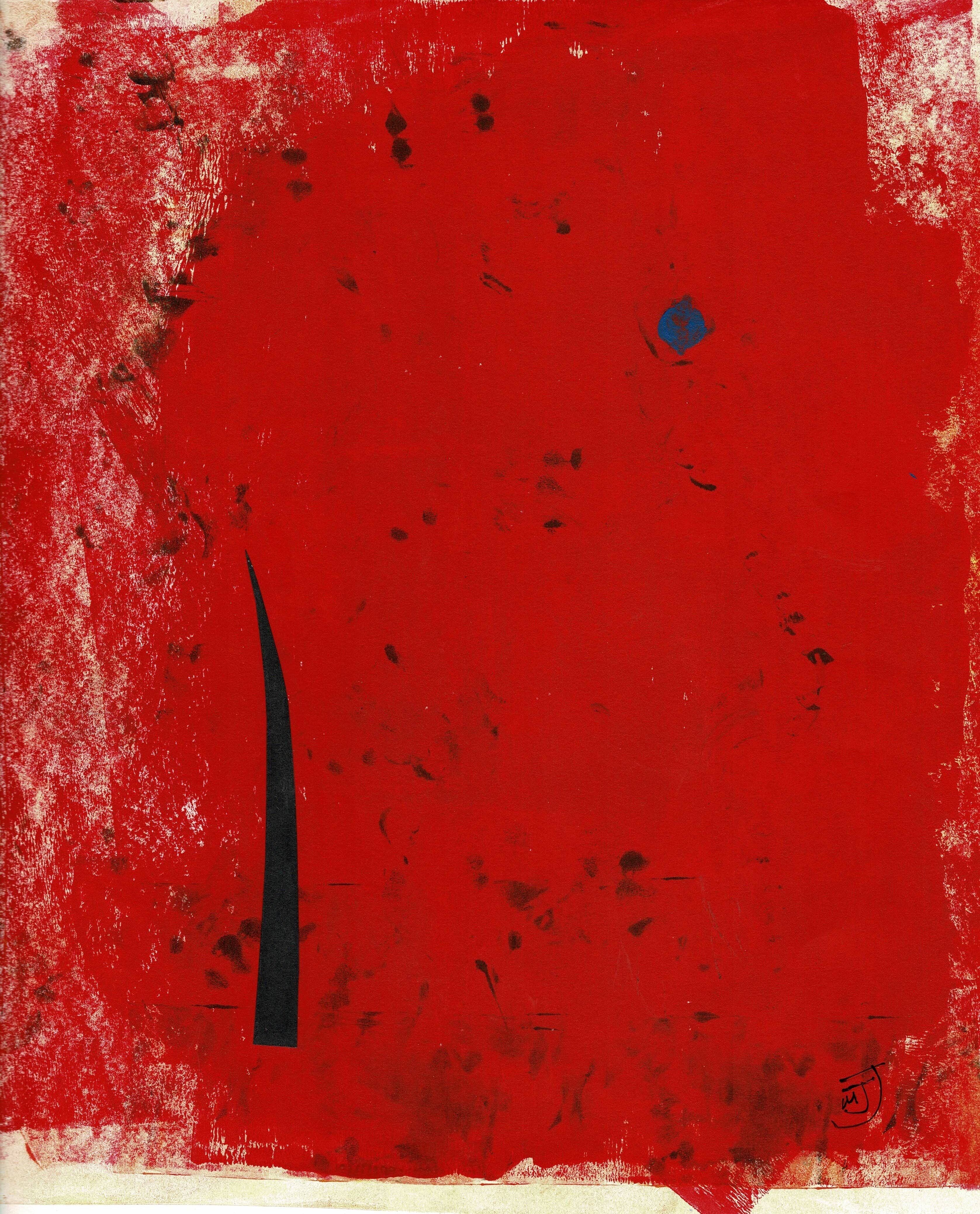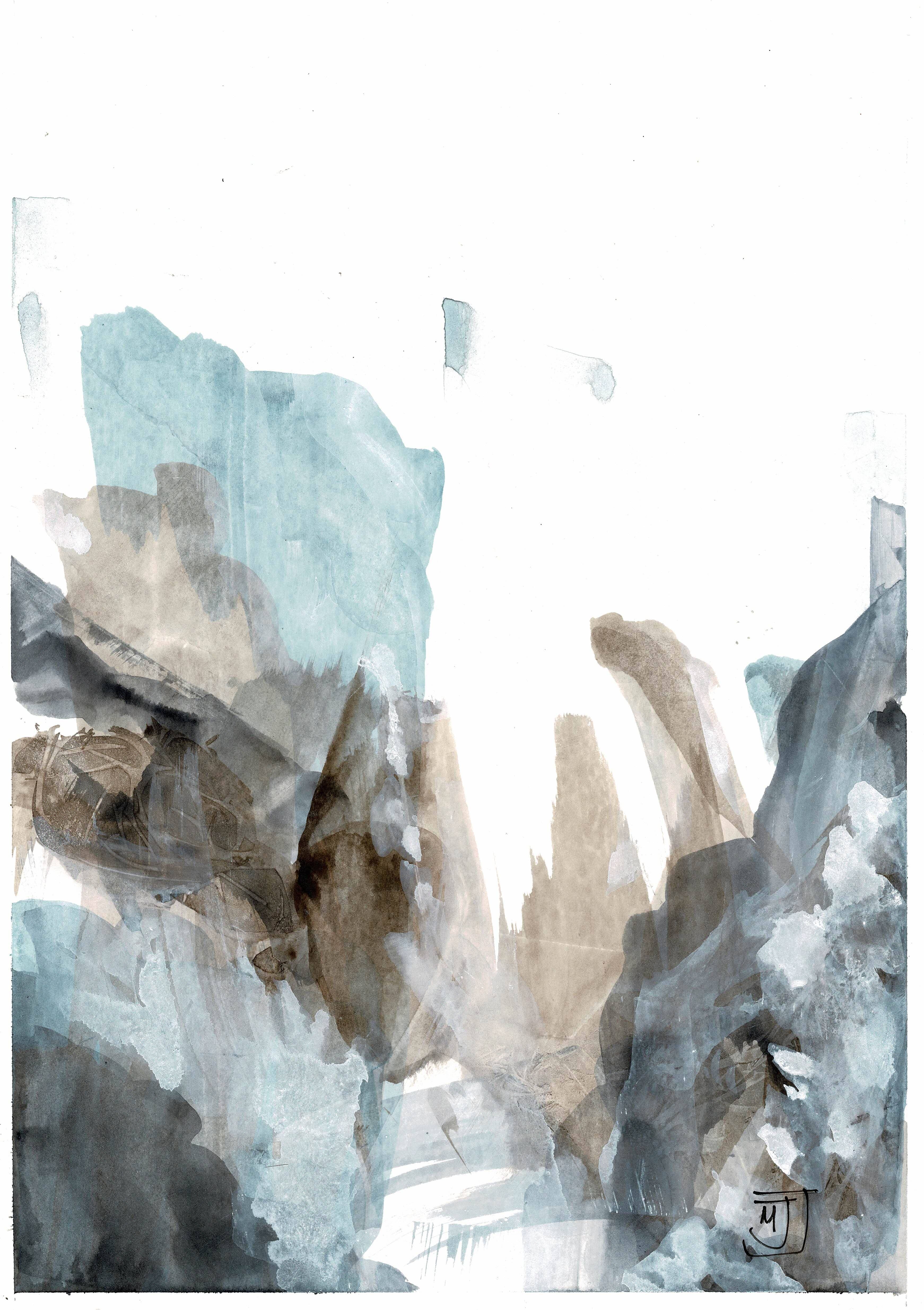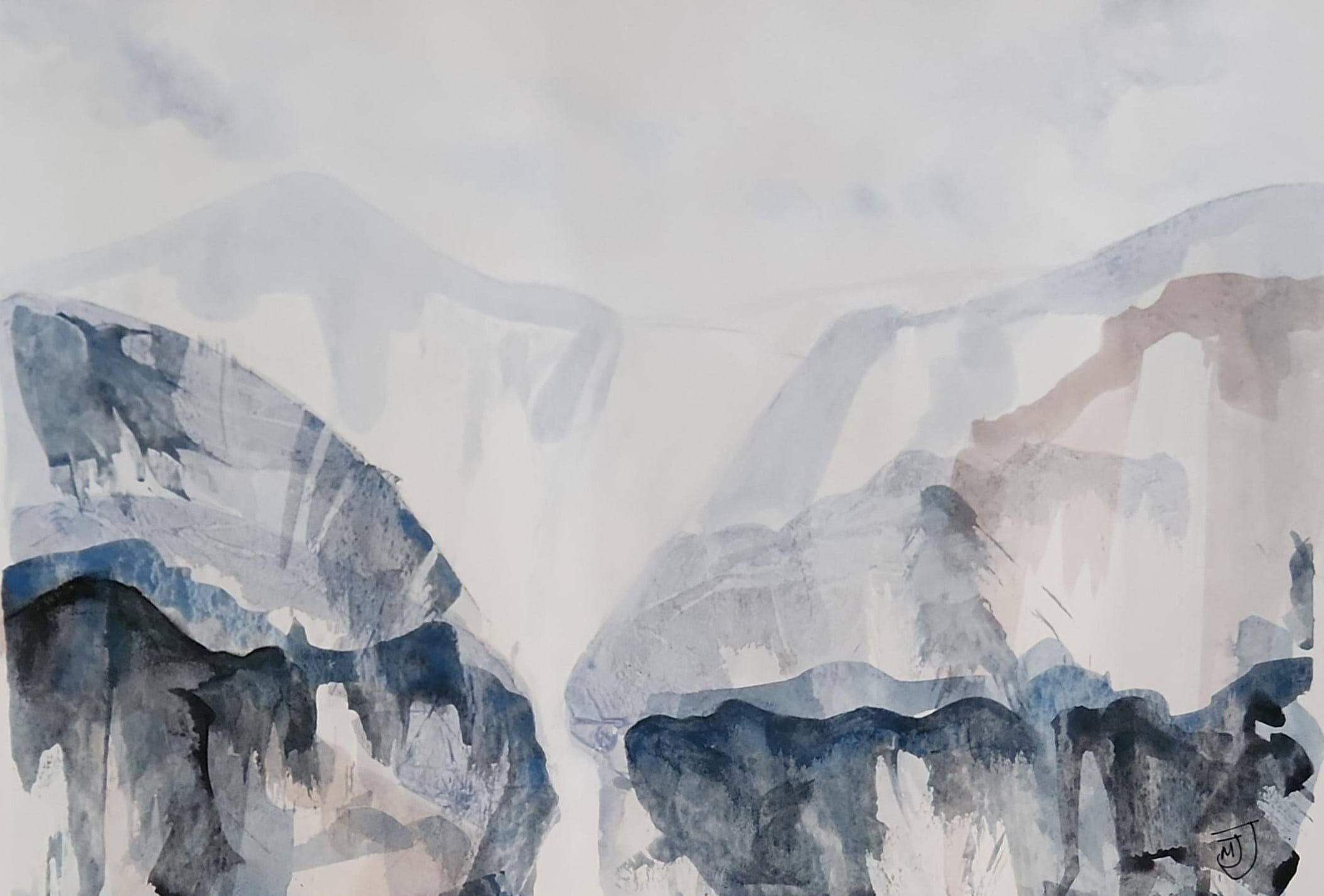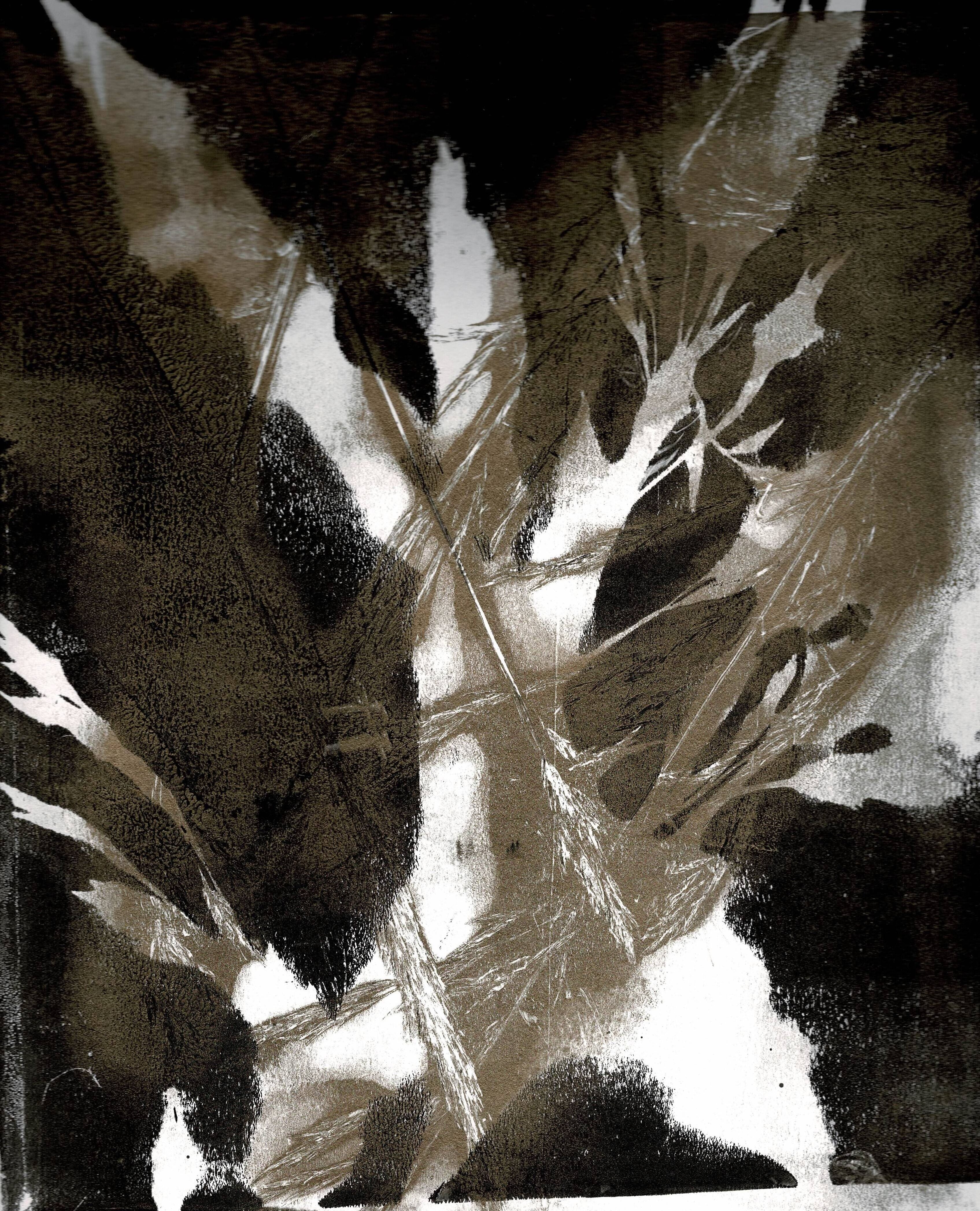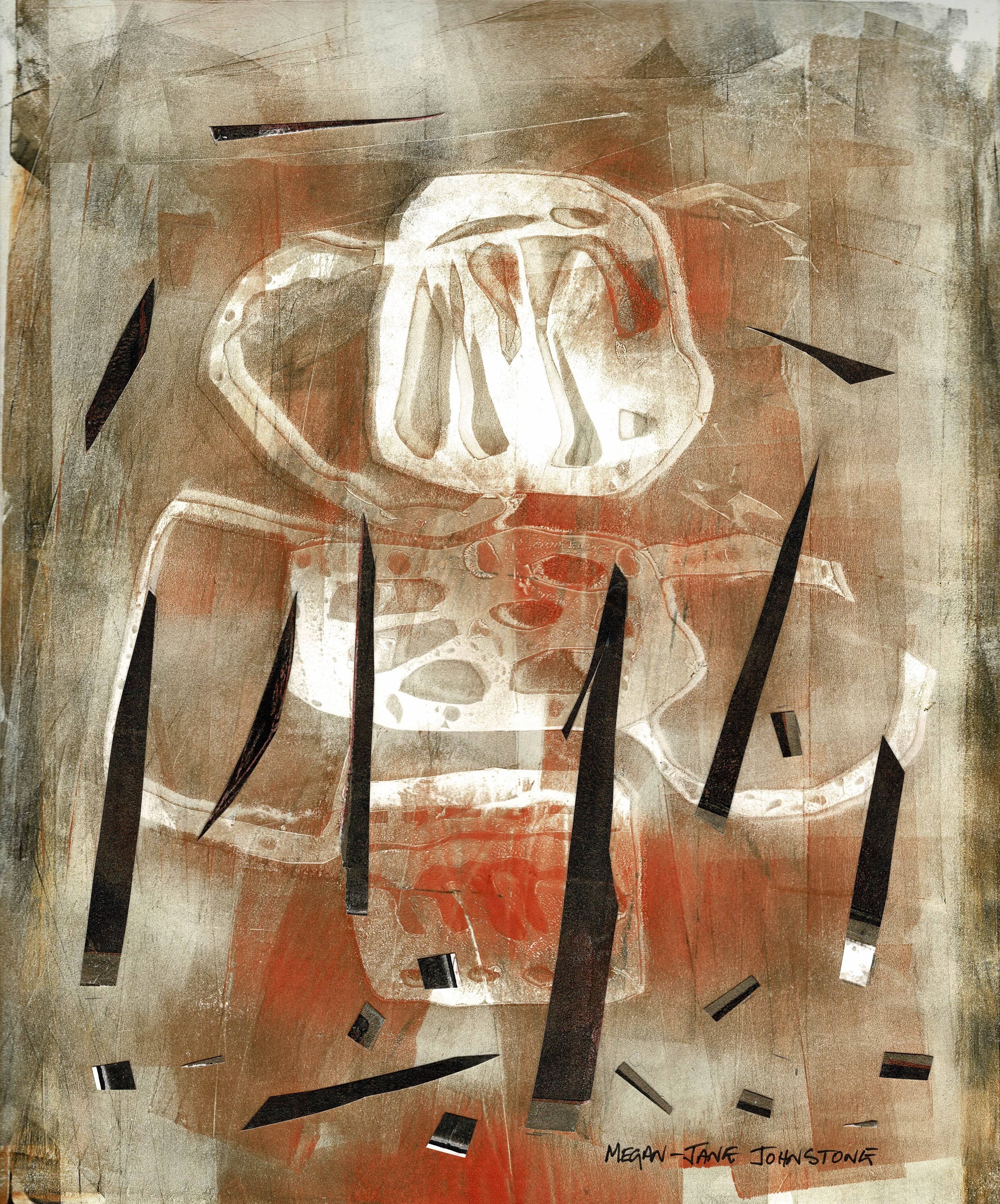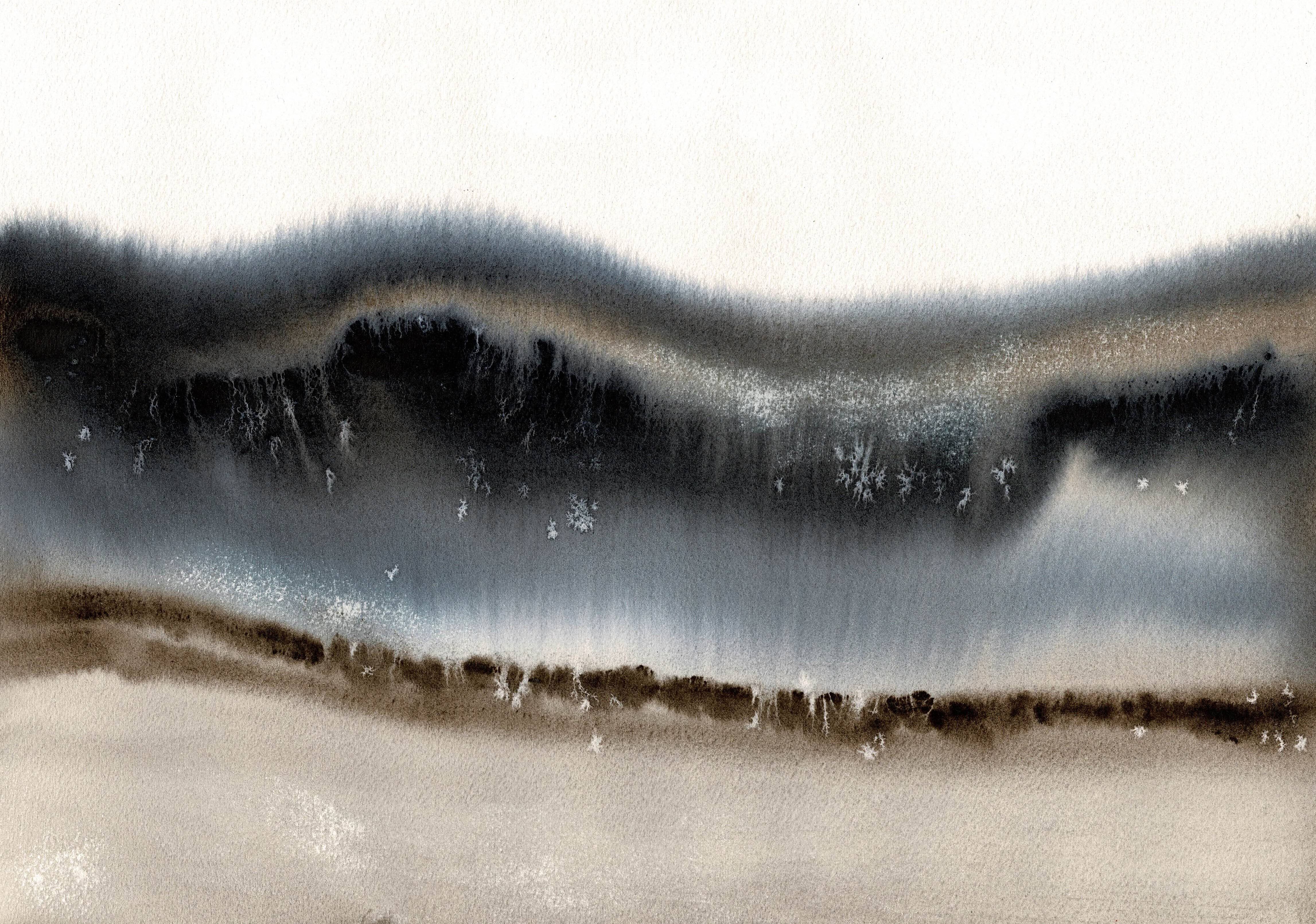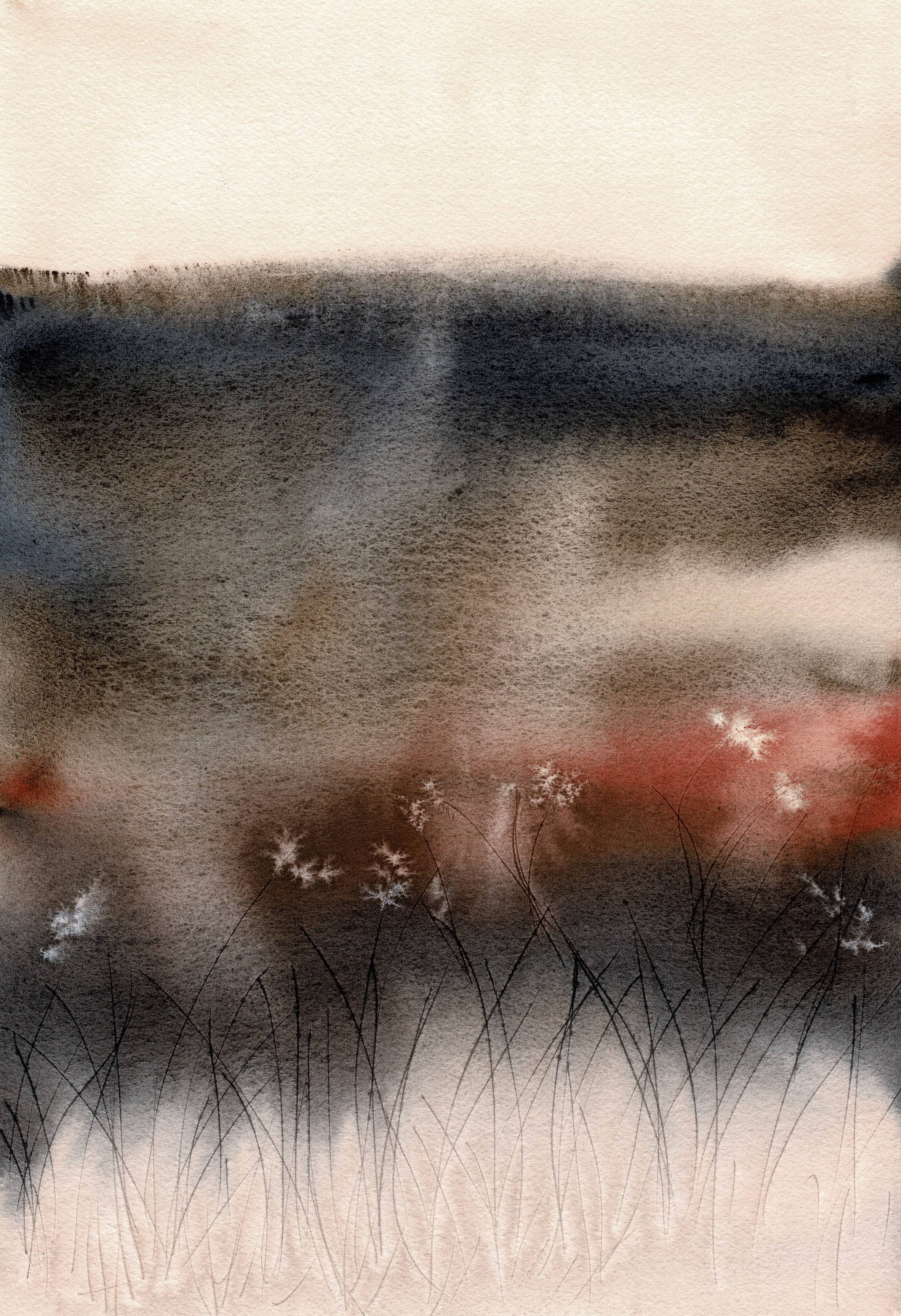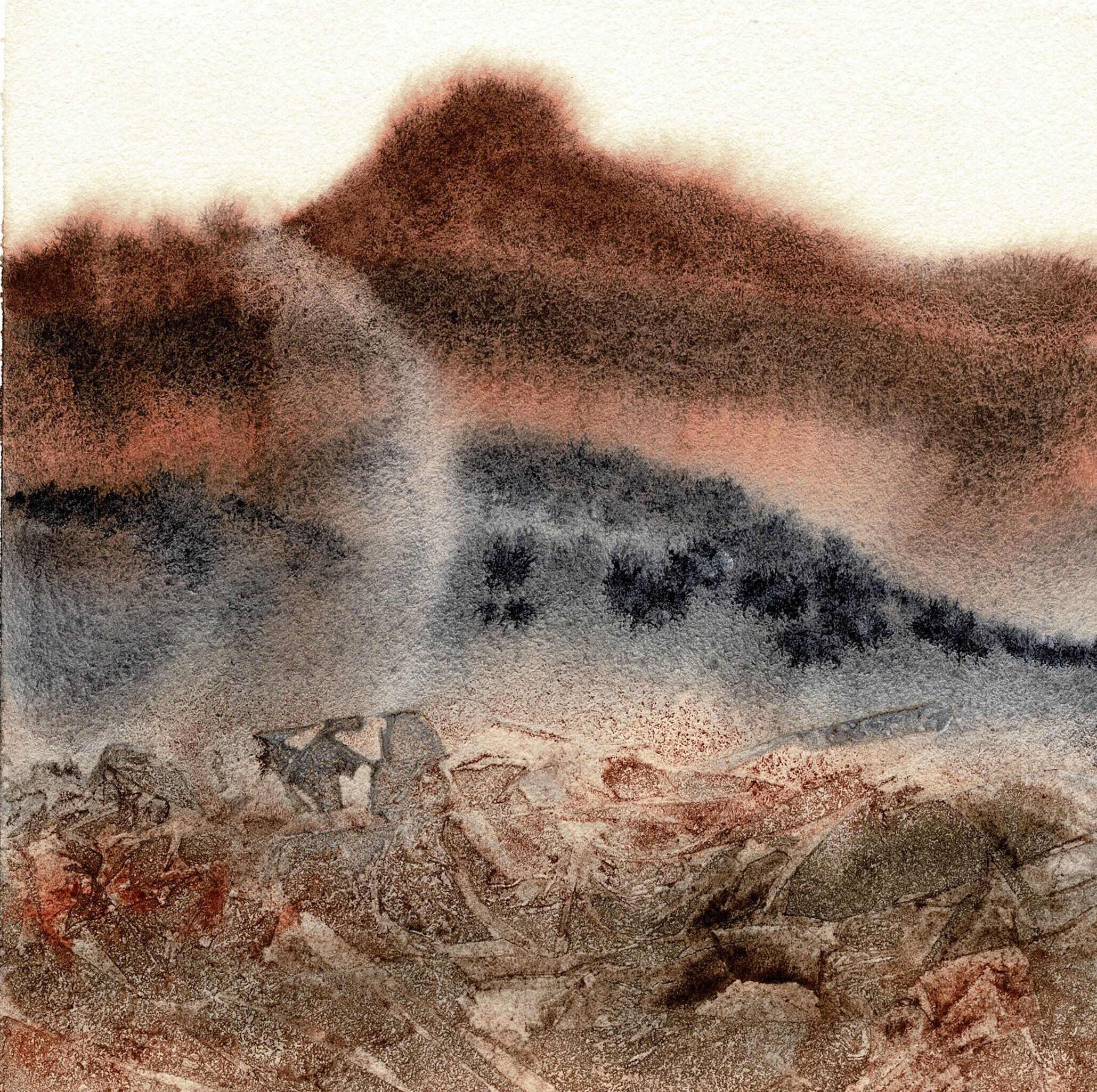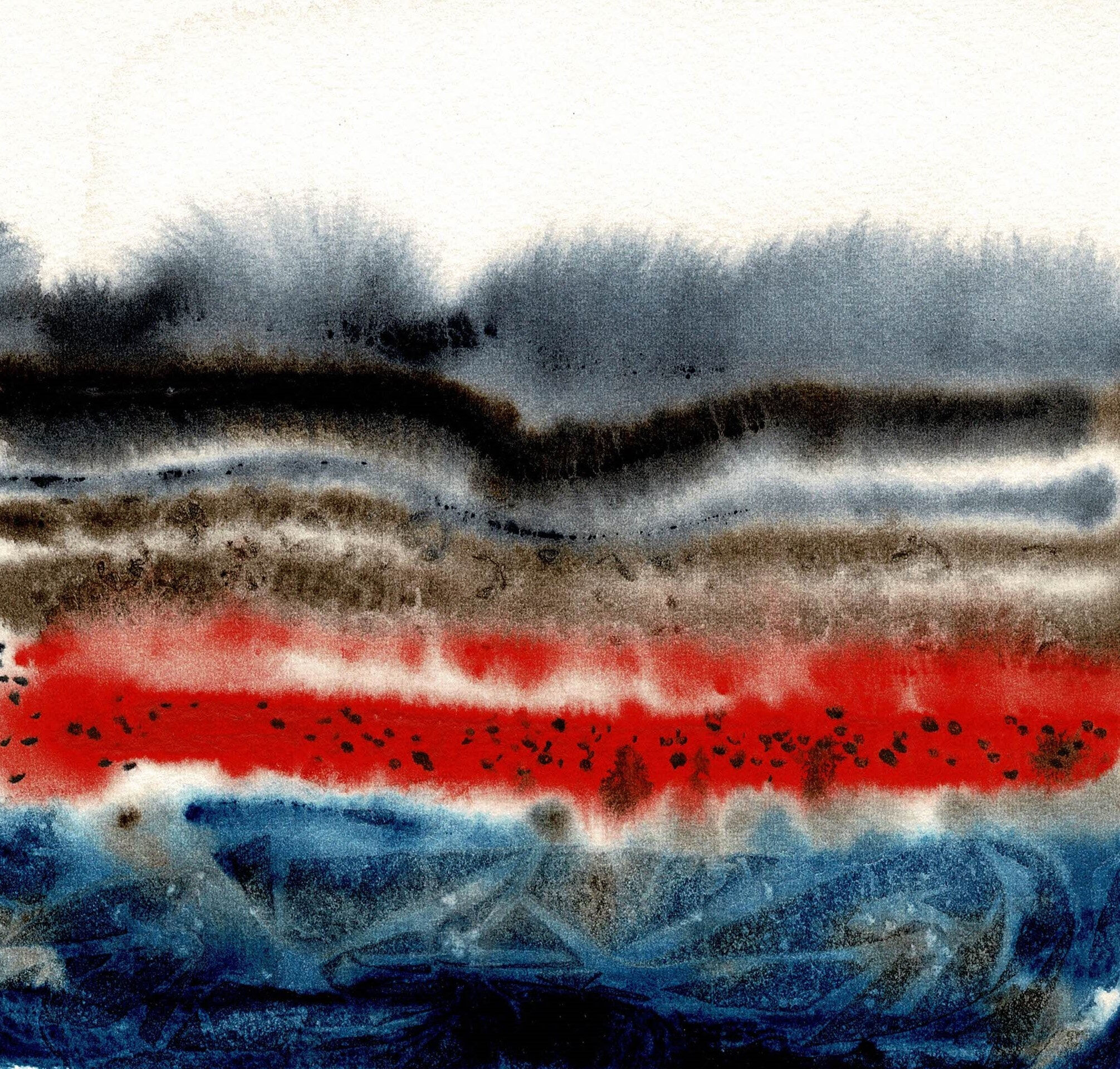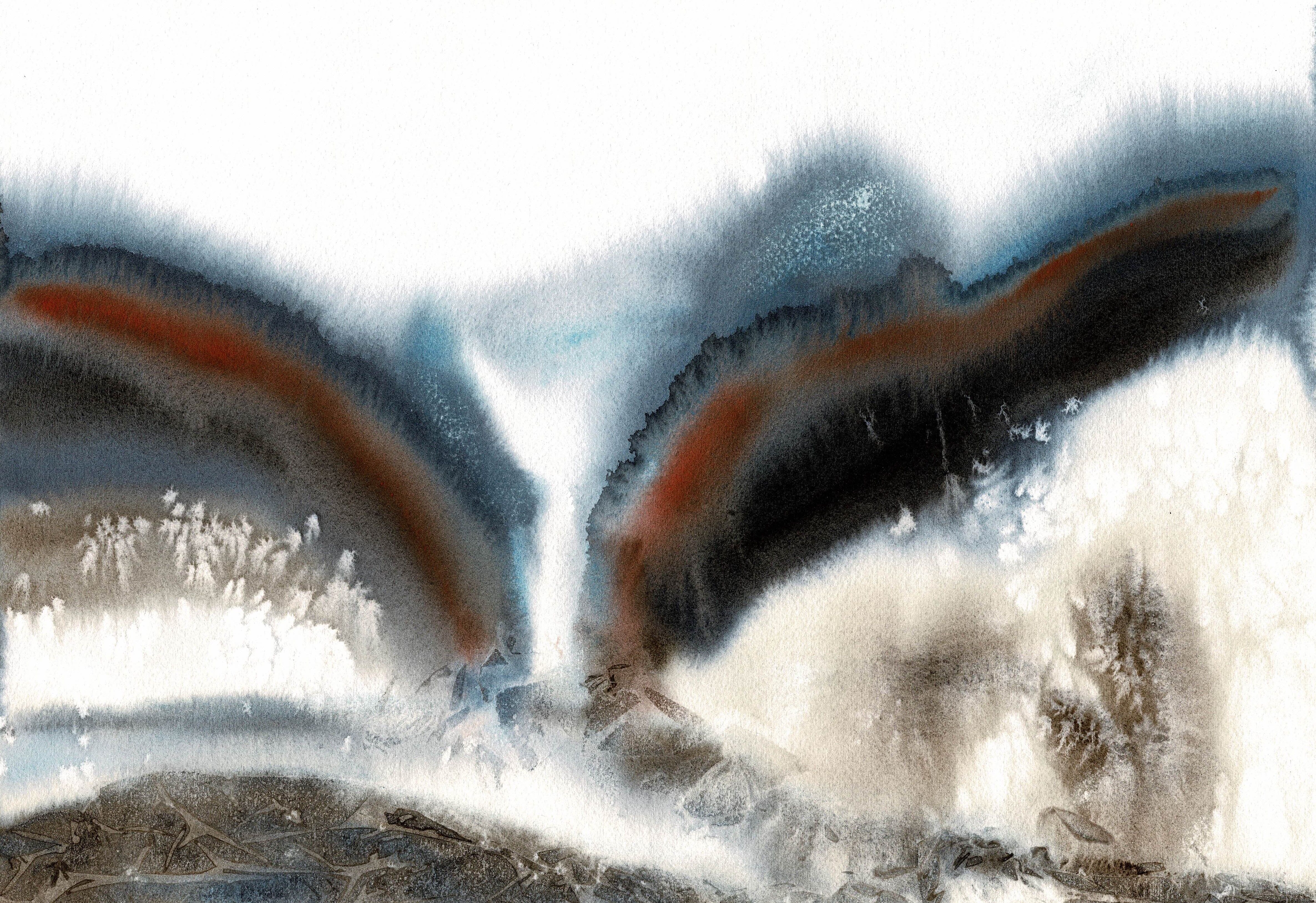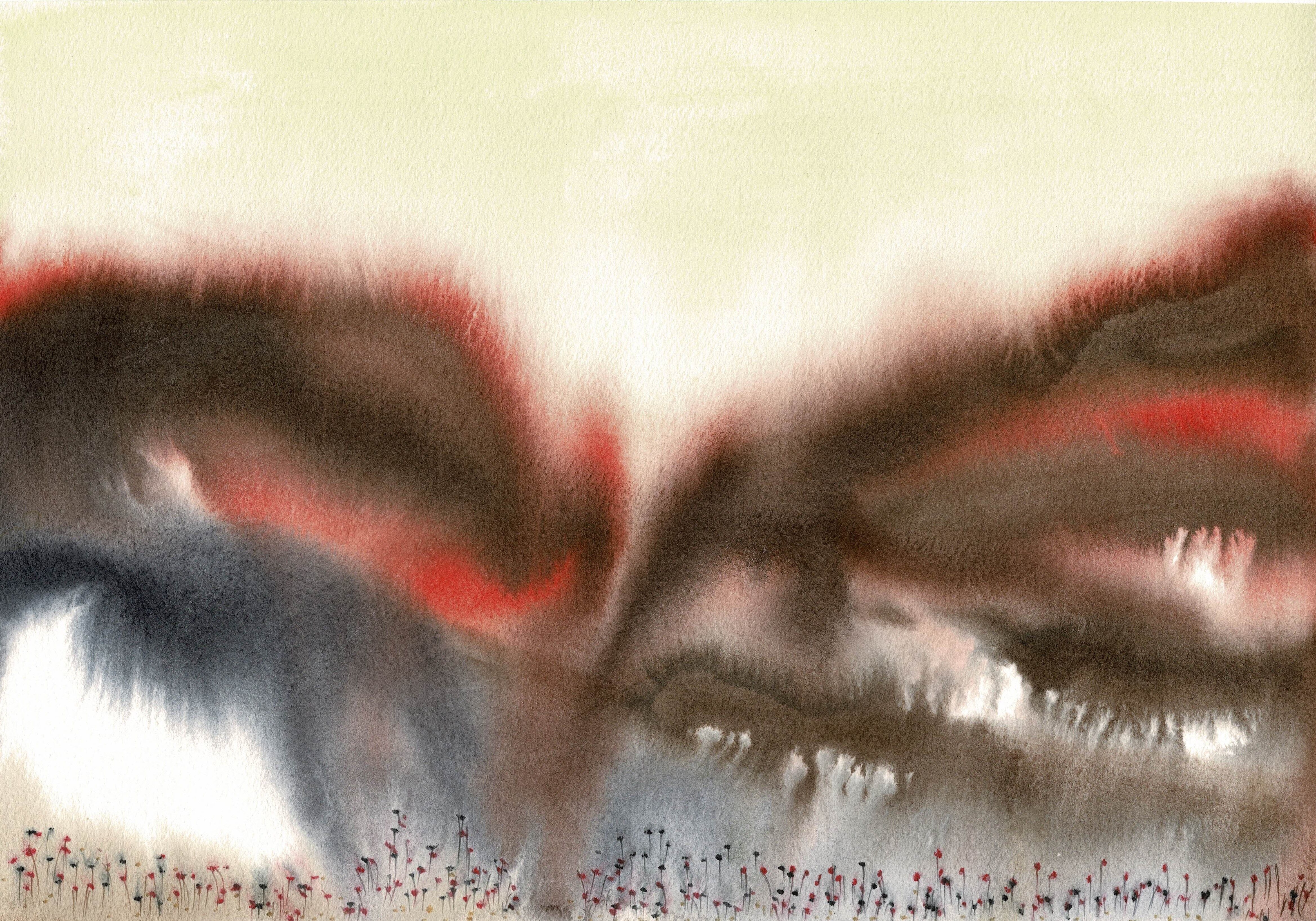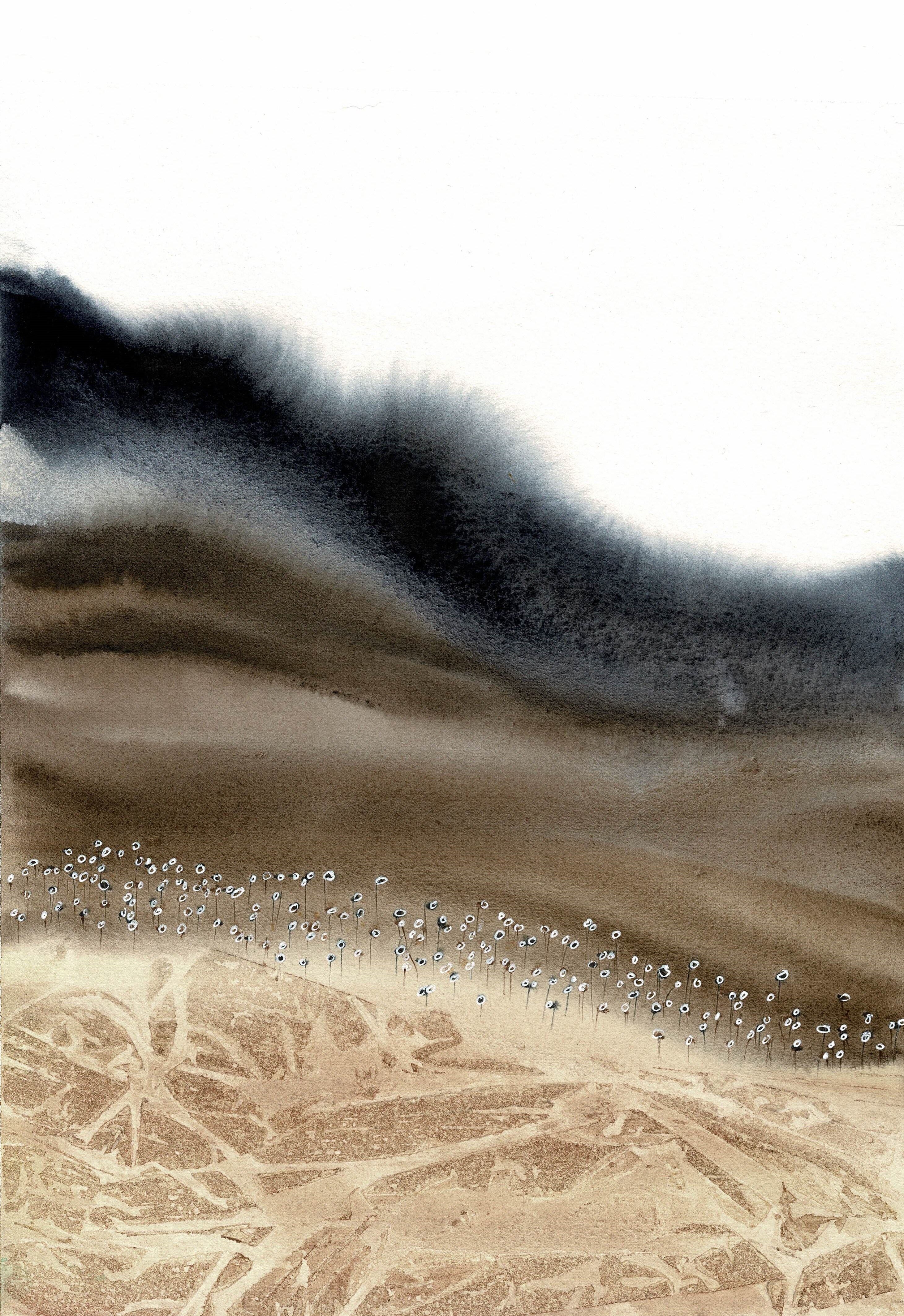Lake Takapō from above 5/2
52cm (W) x 66cm (H) x 2cm (D)
Acrylic and Ink on paper
Artwork unavailable
Artist:
Megan-Jane Johnstone
This work (one of three) is inspired by New Zealand’s Lake Takapō, a magnificent glacial lake formed during the ice age when glaciers carved out the terrain. Lake Takapō’s beautiful colour has its genesis in the erosion of glaciers located in the surrounding alps. As these glaciers move, they grind rocks into ‘particulate’—a fine dust called ‘glacial silt’ or ‘rock flour’. This rock flour is moved along by headwaters. Due to the dust flour being so fine it does not settle to the bottom quickly and remains suspended in the lake’s water. Glacial experts explain that the water turns turquoise blue because: ‘When light hits the surface of the lake, the silt absorbs some of the light (the very short-wave lengths like purple and indigo) and the water absorbs the longer wavelengths (like red, orange and yellow). This leaves the blue-green wavelengths to be scattered back to our eyes, so we see the lake as a blue/green colour’.
This work can be hung as a single artwork or together with the other works as either a diptych, or triptych.
Other Works by Megan-Jane Johnstone
Acknowledgment of traditional owners.
We would like to pay our respects to the traditional owners of the land on which our building stands, their leaders, past, present and emerging.



